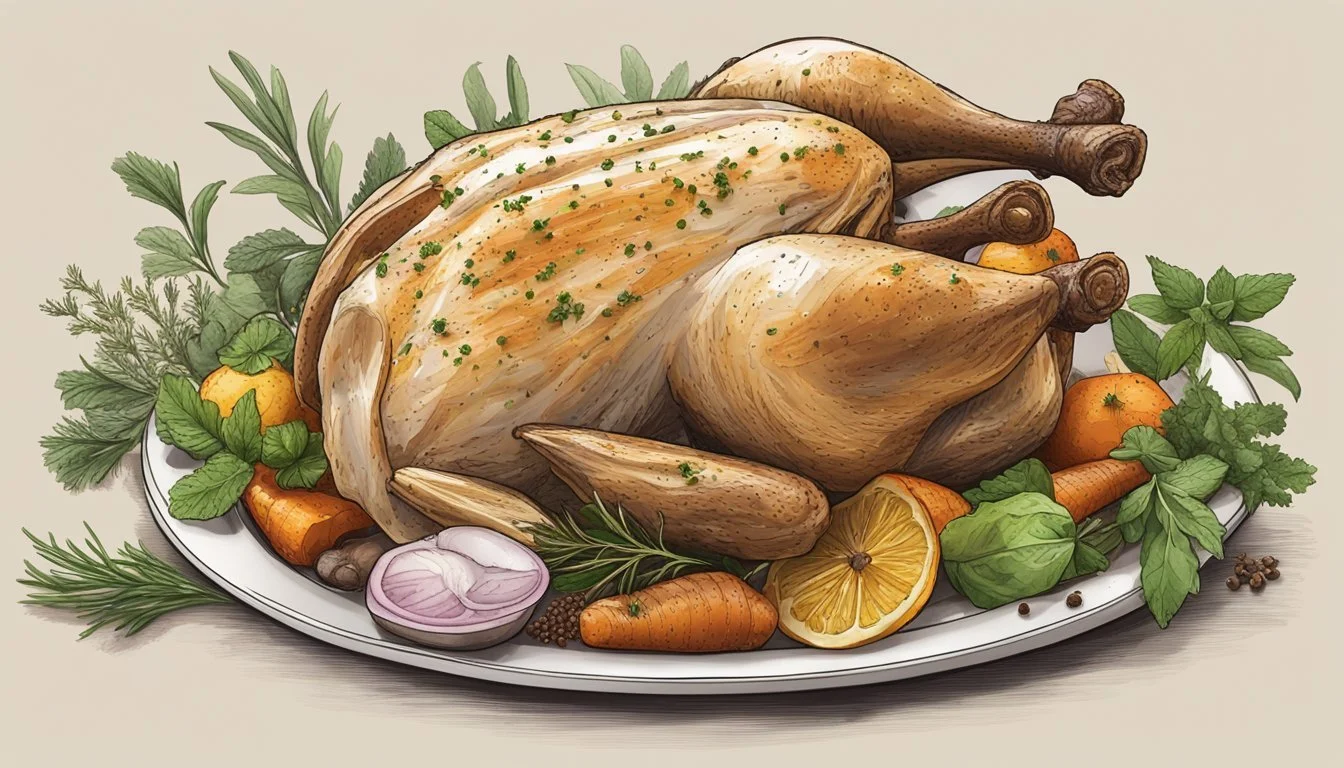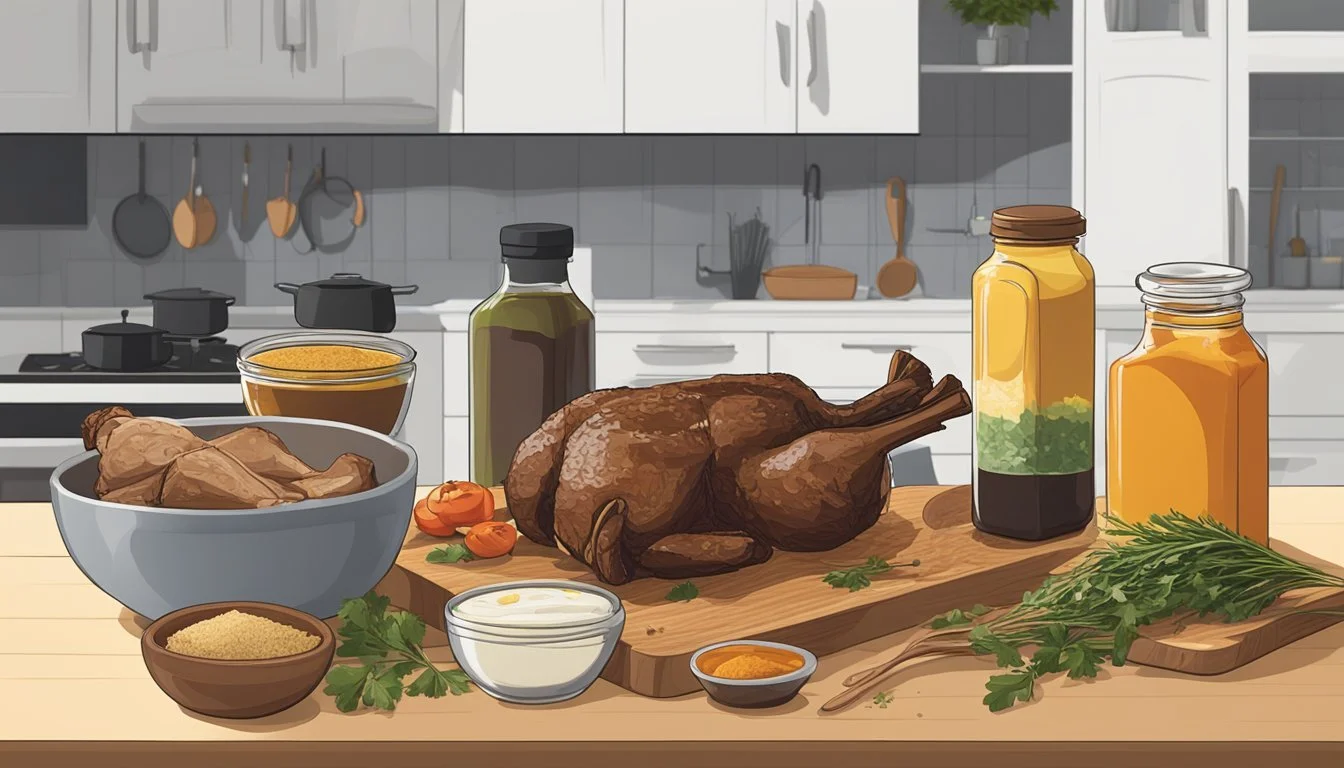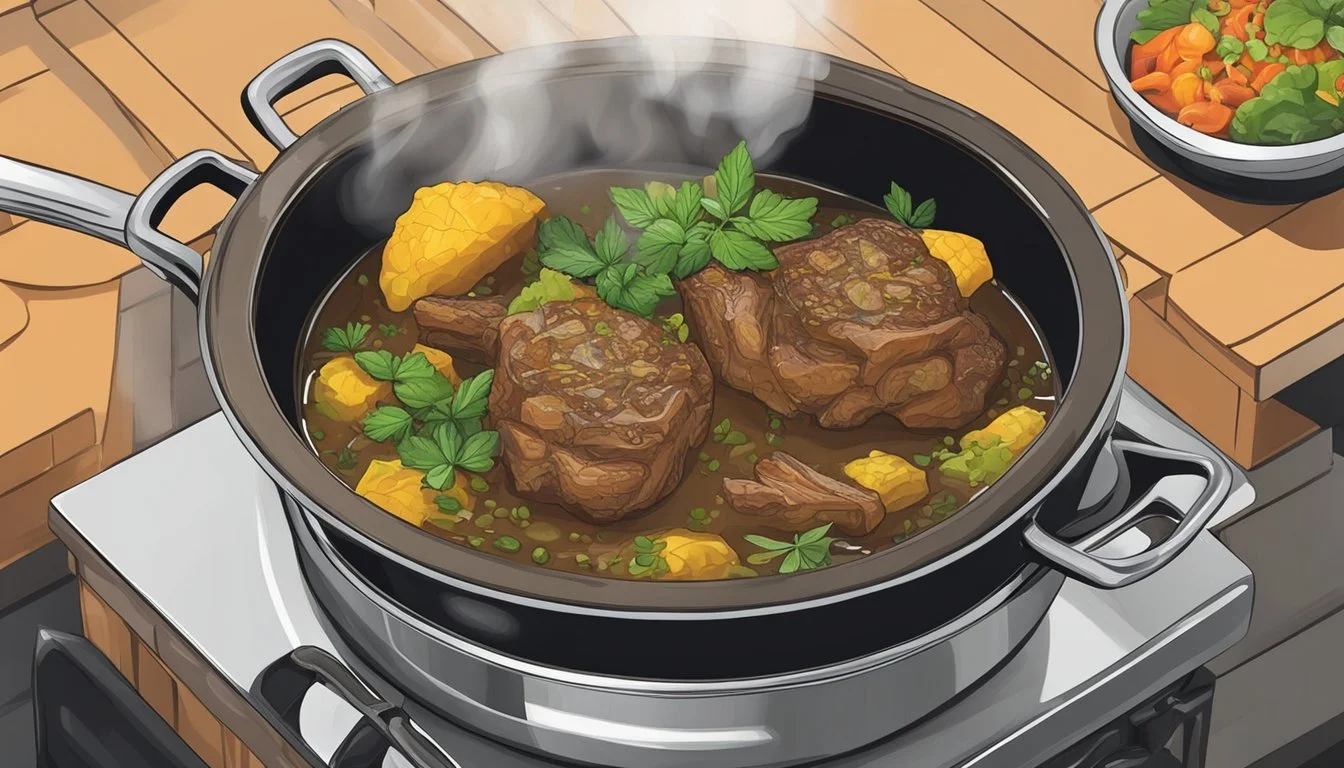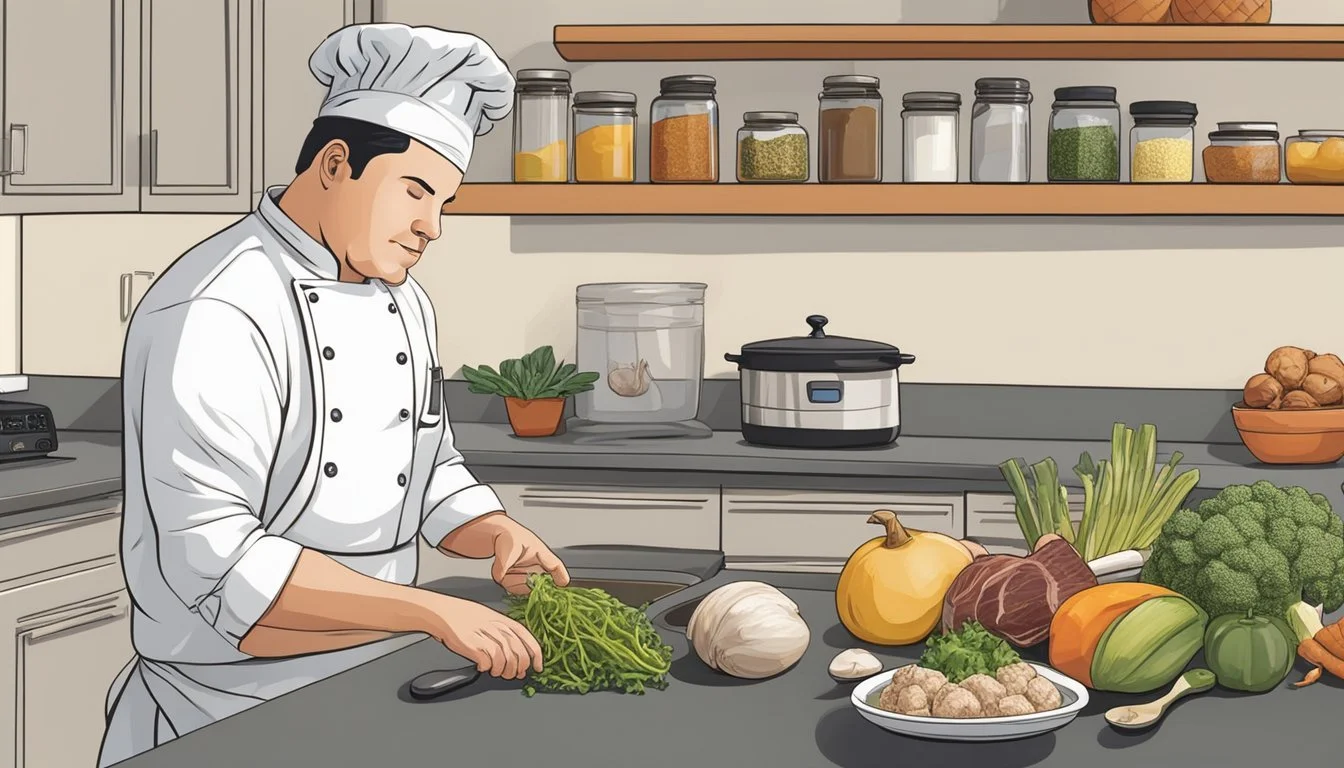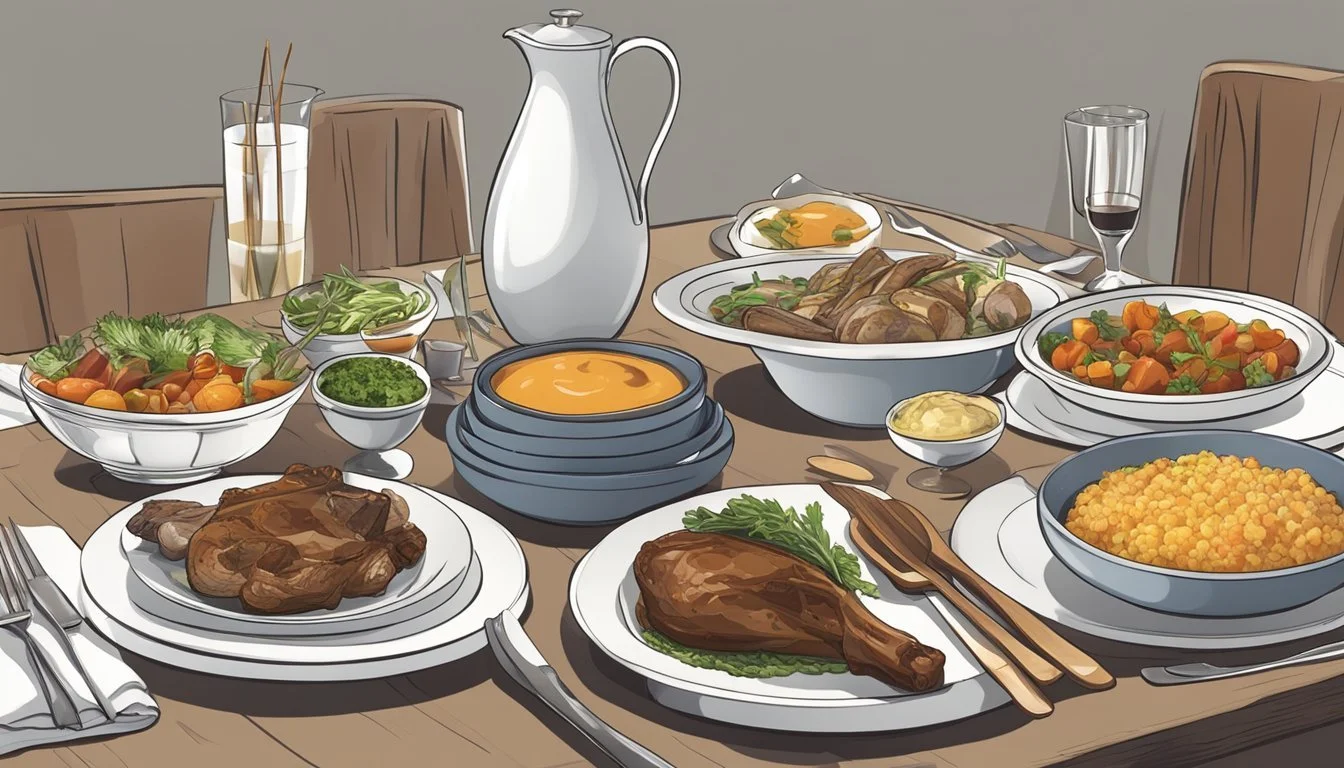Lamb Shank Substitutes
Top Alternatives for Your Recipes
Lamb shank is a prized cut known for its rich, succulent flavor and tender, fall-off-the-bone texture. Slow-cooked to perfection, it is a favorite in many hearty dishes that require a robust protein. However, lamb shanks are not always readily available, or some might seek alternatives for dietary or culinary reasons.
Beef shanks emerge as a top substitute for lamb shanks, offering a similarly deep, rich flavor while needing a bit more moisture during cooking to achieve tenderness. They provide a comparable protein level and a satisfying meatiness that can seamlessly replace lamb shanks in most recipes. Another notable option is veal shanks, which deliver a slightly milder flavor and tenderness, making them suitable for those who prefer a less intense taste.
For a more unconventional substitute, pinto beans present a plant-based alternative with a meaty texture and flavor, offering a healthy dose of protein and fiber. These beans can be prepared using similar cooking methods as lamb shanks, making them an excellent option for those seeking a vegetarian or health-conscious substitute.
Understanding Lamb Shank
Lamb shank is a popular cut known for its rich flavor and tender texture when cooked properly. This section will explore the key characteristics of lamb shank and highlight its common culinary uses.
Characteristics of Lamb Shank
Lamb shank is cut from the lower section of the lamb's leg. It contains a high amount of connective tissue and bone marrow, which contribute to its rich flavor when cooked. The abundance of connective tissue requires slow cooking methods, such as braising, to break down the fibers and achieve a tender texture.
When braised, the marrow within the bone dissolves into the cooking liquid, enhancing the dish with a deep, savory flavor. Red wine sauce is a popular pairing, as it complements the robust taste of the lamb. The meat is typically tender and juicy, ideal for hearty meals.
Culinary Uses
Lamb shank is versatile in the kitchen, suitable for various dishes. It is often used in braised dishes, where the meat is cooked slowly in a flavorful liquid until it is tender. Combining lamb shank with ingredients like garlic, herbs, and vegetables can result in a delicious, succulent meal.
Traditional recipes often include lamb shank in stews, curries, and cassoulets. The cut's richness makes it a good match for strong flavors, such as red wine sauce and aromatic spices. Besides, the slow-cooking process allows the flavors to meld perfectly, creating a comforting and satisfying dish.
Meat-Based Substitutes for Lamb Shank
Several meat-based alternatives to lamb shank provide similar flavors and textures, making them suitable for various recipes. These alternatives come from different animals and cuts of meat, each offering unique benefits.
Beef and Beef Cuts
Beef shank is a popular substitute due to its robust flavor and chewy texture. It works well in slow-cooked stews and dishes like osso buco.
Beef short ribs offer a rich, meaty taste, ideal for braising. They absorb marinades well and become tender over long cooking periods.
Chuck roast and brisket are also viable options. Both are taken from the cattle's shoulder and chest respectively, requiring slow, moist cooking methods to break down their toughness. Brisket, in particular, is famous for its flavorful marbling.
Pork Varieties
Pork shank is a great alternative, known for its tenderness when slow-cooked. It absorbs flavors from herbs and spices, making it suitable for various recipes.
Pork shoulder is another choice, offering a bit more fat and therefore a juicier result. It's a versatile cut that can be used in dishes that traditionally call for lamb shank.
Pork neck is a less common but valuable substitute. It requires long, slow cooking to break down its connective tissues, similar to lamb shank. It’s often used in hearty stews and casseroles.
Veal and Its Suitability
Veal shank is a lighter, more delicate alternative. It shares a similar bone structure with lamb shank and is frequently used in dishes like osso buco.
Veal shoulder can also be a reasonable substitute. It has a mild flavor compared to lamb but provides tender and juicy meat when braised.
These veal cuts are best suited for slow-cooking methods where they can absorb surrounding flavors and develop a rich taste.
Other Red Meats
Goat meat is a strong contender, offering a flavor profile very close to lamb. Cuts like the leg shank or shoulder shank can be used in recipes that traditionally require lamb shank.
Mutton provides a fattier and more intense flavor, which may appeal to those who enjoy the richness of lamb. It is better suited for robust dishes that can handle its stronger taste.
Turkey legs stand as an unconventional but effective substitute. They become exceptionally succulent when slow-cooked and have a mild taste that can take on a variety of seasonings, making them quite versatile.
Poultry as a Substitute for Lamb Shank
Poultry can be a practical and tasty alternative when looking to replace lamb shank in various recipes. Chicken thighs and turkey legs, in particular, work well in hearty dishes and can mimic the textures required for slow-cooked meals like stews.
Chicken in Hearty Dishes
Chicken thighs offer a flavorful and juicy option for recipes traditionally calling for lamb shank. Their higher fat content compared to other chicken cuts ensures they remain tender during slow cooking methods such as braising and stewing.
In stews, chicken thighs absorb the rich flavors of the cooking liquid, creating a dish that is both hearty and satisfying. Braising chicken thighs in a mixture of broth, wine, and aromatic vegetables can yield a result similar to a traditional lamb shank stew, providing depth of flavor and tenderness.
Turkey Alternatives
Turkey legs provide another excellent poultry substitute for lamb shank. They are larger and meatier than chicken thighs, making them ideal for slow roasting or braising to achieve a tender, fall-off-the-bone texture.
When roasting turkey legs, it's important to slow cook at low temperatures to break down the connective tissues, resulting in a rich and flavorful dish. Turkey legs can also be utilized in stews, delivering a robust taste that stands up well to strong flavors and spices commonly paired with lamb.
Both chicken thighs and turkey legs offer versatile options that can effectively replace lamb shank in many recipes, providing unique flavors and textures to satisfy any palate.
Vegetarian and Vegan Substitutes
For those adhering to a vegetarian or vegan diet, finding substitutes that mimic the texture and flavor of lamb shanks can be challenging. However, plant-based proteins and legumes offer a variety of flavors and nutritional benefits.
Plant-Based Proteins
Tofu and tempeh are popular choices among vegetarians and vegans. Tofu, made from soybeans, has a mild flavor and can absorb marinades well. It is rich in protein, iron, and calcium. The texture of tofu can vary, making it versatile for recipes like stews or casseroles.
Tempeh, another soybean product, offers a firmer texture with a nutty flavor. Tempeh is packed with protein, fiber, folate, magnesium, and potassium. It works well when marinated and used in grilling or stir-frying, and it is a sturdy option for replacing lamb shanks in various dishes.
Using Legumes and Grains
Legumes, such as lentils, are another excellent substitute. Lentils provide a robust nutritional profile, including protein, fiber, iron, and folate. They can be used in salads, soups, or stews to imitate the heartiness of lamb. Different varieties, such as green or brown lentils, offer various textures and flavors to match your recipe needs.
Incorporating grains like quinoa can further enhance the nutritional value of a dish. Quinoa is rich in protein and essential amino acids, making it an excellent addition to provide extra body and substance to vegetarian lamb substitutes in casseroles or grain bowls.
Seasonings and Marinades to Mimic Lamb Flavor
Utilizing the right herbs and spices can bring a lamb-like essence to your dish. Additionally, developing flavorful broths and liquids is key to achieving that hearty, earthy flavor associated with lamb.
Herbs and Spices for Lamb Essence
Dried thyme is an excellent choice. If using fresh thyme, adjust the quantity to 4-½ teaspoons to match the intensity of dried thyme.
Oregano is another essential herb. Use about 1 tablespoon of fresh oregano as a substitute for dried, or consider using dried mint for a unique twist.
Incorporate black pepper, either ground or freshly toasted and crushed peppercorns. This adds a subtle yet bold note.
Garlic powder can be substituted with fresh crushed garlic cloves. Fresh garlic will provide a more robust flavor. The combination of these herbs and spices will help to mimic the distinctive earthy flavors of lamb.
Creating Flavorful Broths and Liquids
A rich stock forms the base of many lamb recipes. Consider using beef or veal stock as a substitute, as these provide a similar depth of flavor.
Incorporating a good quality red wine in the braising liquid enhances the savory notes and adds complexity. Ensure to choose a wine that complements the meat's profile.
For an additional layer of flavor, blend the stock with herbs like rosemary, thyme, and bay leaves. The combination will give the braising liquid the character it needs.
A properly seasoned and balanced broth is crucial. Adjusting salt, pepper, and acidity levels can make a significant difference. This careful balance highlights the meaty and earthy tones typical in lamb dishes without overwhelming other flavors.
Cooking Techniques for Lamb Shank Substitutes
When preparing substitutes for lamb shanks, cooking methods can make a significant difference in flavor and texture. Below, you'll find techniques for braising, roasting, and grilling various lamb shank substitutes.
Braising Alternatives
Braising is ideal for tough cuts that require slow cooking to become tender. Beef shank makes an excellent substitute due to its robust, meaty flavor. It should be browned first, then cooked slowly in a liquid such as broth or wine.
Pork shank is another option, offering a rich and succulent texture. Browning the pork initially and then letting it simmer in stock or a mix of stock and wine prepares it perfectly.
For vegetarian options, consider pinto beans. They can be simmered with vegetables and spices in a flavorful liquid to mimic the rich, hearty quality of lamb.
Roasting and Grilling Methods
Roasting creates a caramelized exterior and juicy interior. Turkey legs are a great substitute, requiring seasoning and roasting at a high temperature until golden brown and cooked through.
Chicken thighs are versatile and can be similarly seasoned and roasted. They provide a tender, juicy alternative to lamb.
For grilling, skirt steak offers a flavorful and tender option. Ensure that the steak is marinated for at least a few hours before grilling for the best results.
Ground pork can be used for dishes like burgers or meatballs. It should be cooked thoroughly but not overcooked to prevent dryness.
By choosing the proper substitute and cooking technique, you can achieve a delicious outcome that rivals traditional lamb shank dishes.
Selecting the Right Substitute for Your Recipe
Choosing the best substitute for lamb shank involves evaluating texture, taste, and how well the substitute fits the specific recipe you're preparing. Consider the dish type, cooking methods, and flavor profiles while making your selection.
Considerations for Texture and Taste
The texture and taste of the substitute should closely match lamb shank. Veal shank offers a delicate and tender flavor, much like lamb, making it suitable for various dishes including casseroles, stews, and Italian dishes such as osso buco. Pork, especially cuts like the shoulder, provides a denser texture but blends well in soups and stews due to its cooking versatility.
Chicken thighs present a lighter alternative. They maintain tenderness during long, slow cooking, ideal for stews and casseroles. When aiming for non-meat options, pinto beans deliver a meaty texture and are perfect for adding both protein and heft to stews and soups.
Recipe-Specific Substitute Choices
Certain substitutes work better depending on the recipe. For hearty stews or soups that require slow-cooked, tender meat, beef shank or pork shoulder serve as excellent choices. Chuck roast, cut from the shoulder and neck of cattle, also works well in slow-cooked recipes, although it brings a richer taste.
For recipes like Italian dishes, where a more refined flavor is needed, veal shank is the go-to substitute. Chicken thighs can replace lamb shanks in lighter casseroles or slow-cooked dishes, ensuring the same tenderness without the heavy flavors of lamb. Tofu or tempeh can be utilized for vegetarian alternatives, mimicking the texture while taking on the surrounding flavors effectively.
Health Considerations of Lamb Shank and Its Substitutes
Lamb shanks provide a distinct nutritional profile, but various substitutes also offer valuable health benefits. Examining the nutritional content and accommodating dietary needs helps in making informed decisions.
Nutritional Comparison
Lamb shanks are rich in protein, iron, and essential vitamins such as B12. They also contain a moderate amount of fat. For instance, a 100-gram serving of lamb shank provides:
Protein: 20-25g
Iron: 2.3 mg
Vitamin B12: 0.7 µg
Alternatives such as pork, beef, and chicken thighs offer similar protein content but vary in fat levels and other nutrients. For instance:
Beef shank:
Protein: 21g
Iron: 2.7 mg
B12: 2.0 µg
Chicken thighs:
Protein: 19g
Iron: 0.9 mg
B12: 0.3 µg
Plant-based substitutes like tofu and tempeh offer high protein and fiber content without cholesterol and lower fat:
Tofu (100g):
Protein: 8g
Iron: 1.6 mg
Fiber: 1g
Tempeh (100g):
Protein: 19g
Iron: 2.7 mg
Fiber: 8g
Dietary Needs and Restrictions
For individuals avoiding red meat due to health concerns or dietary restrictions, poultry and plant-based options are excellent alternatives. Those needing lower cholesterol can opt for chicken thighs or plant proteins.
People with iron-deficiency anemia may benefit more from red meat substitutes like beef or lamb, which provide heme iron that is easily absorbed. Vegetarians and vegans can turn to lentils, tofu and tempeh, which also offer iron but require pairing with vitamin C-rich foods for better absorption.
For those focusing on a higher fiber intake, plant-based substitutes are advantageous. For example, tempeh and legumes like pinto beans provide not only protein and iron but also substantial fiber content, aiding digestive health.
Accompaniments to Complement Your Choice of Substitute
When opting for a lamb shank substitute, selecting the right accompaniments can elevate your meal. Pair your chosen substitute with well-balanced side dishes and complementary beverages to enhance the flavors.
Side Dishes for Balance
Selecting a side dish that balances the rich, meaty texture of your substitute is crucial. Mashed potatoes and roasted vegetables are excellent choices. The creaminess of mashed potatoes complements the savory profile of substitutes like beef topside or knuckle. Roasted vegetables, such as carrots or Brussels sprouts, bring a hint of sweetness that pairs well with pork or veal.
For a lighter option, quinoa salad or cauliflower mash provides a nutritious and tasty balance. These veggie side dishes are not only quick and easy to prepare but also add variety in texture and flavor to your meal.
Wine Pairings and Beverages
Pairing the right wine or beverage with your meal can enhance the dining experience. For beef substitutes, such as topside or knuckle, Cabernet Sauvignon or Merlot is recommended. These wines have bold flavors that stand up well to the rich meat.
A substitute like pork pairs nicely with a Pinot Noir or Chardonnay. Veal, with its delicate flavor, pairs excellently with Sauvignon Blanc or a light Pinot Grigio. Non-alcoholic options like a sparkling water with a splash of lime or a robust herbal tea also complement the meal without overshadowing the flavors.



